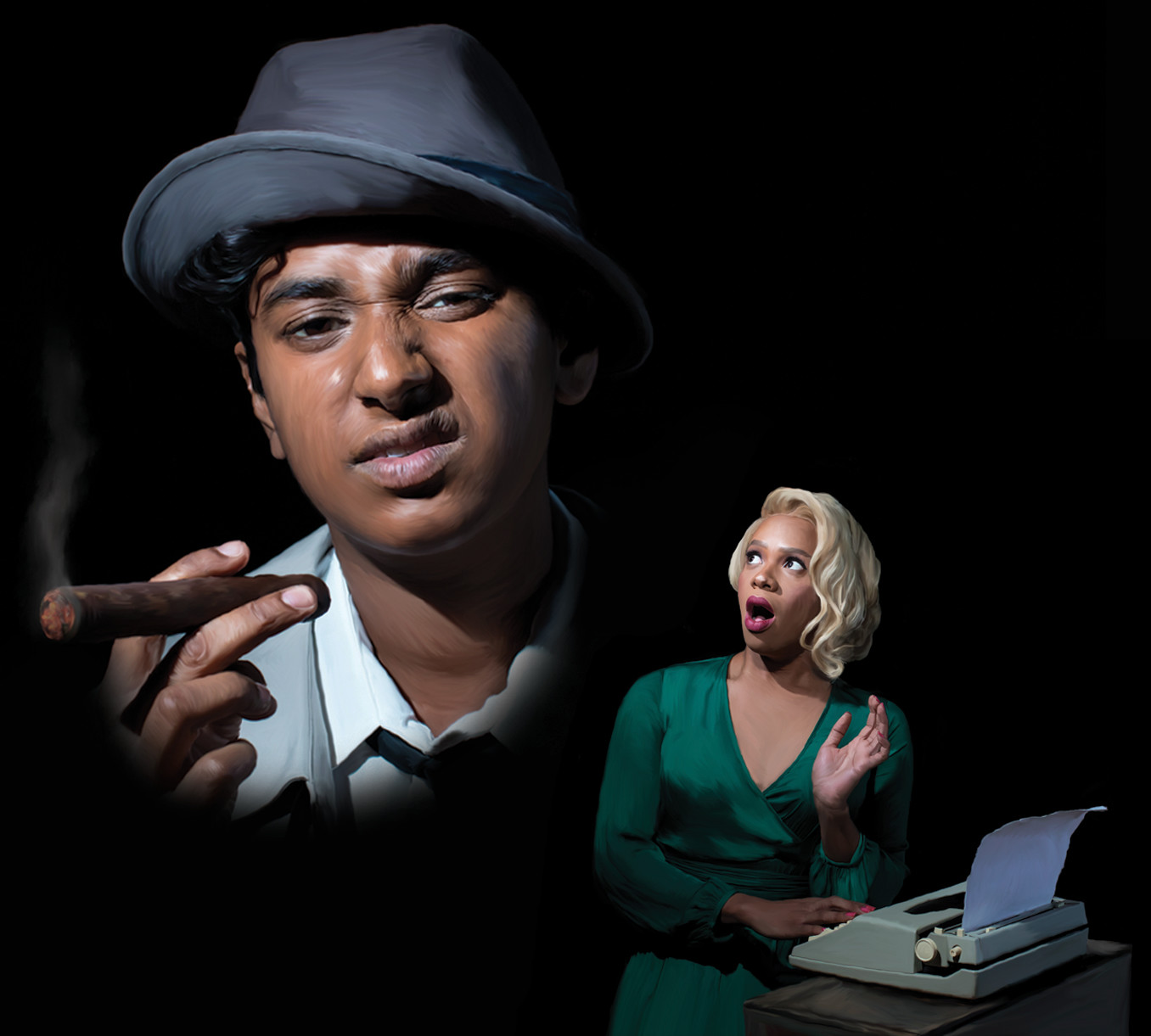Written by Leah Coppella
Cover and feature photos by Lindsay Duncan
Vancouver, city of glass, shining light on the Pacific surrounded by the fringes of the Rocky Mountains and lush northwest rainforest islands. It’s one of the most beautiful places in the world.
It’s also ground zero for the emergent revival of small press noir. Noir in gorgeous, pastoral Vancouver? It’s not as incongruous as you might think, explains John Belshaw, historian and co-author of Vancouver Noir, a photographic chronicle of the so-called Terminal City’s postwar era of graft, gangs, and grifters.
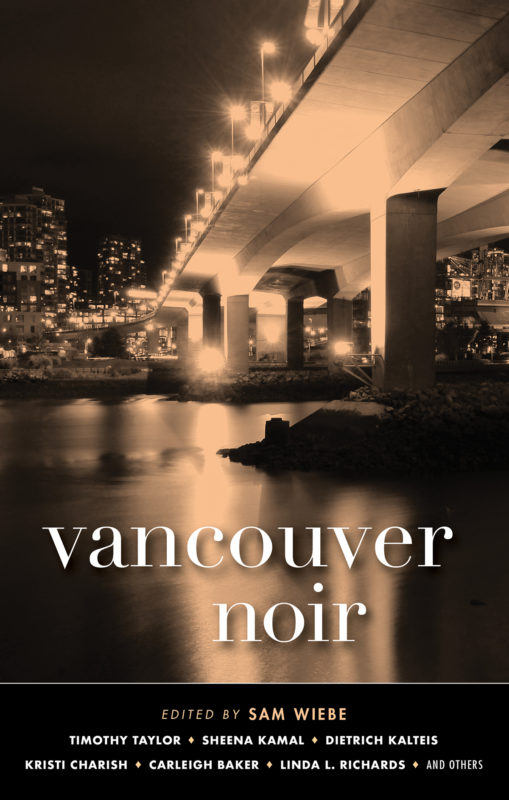
“There’s the opioid and mental health crises in the Downtown Eastside, and the sense that the old city core is so much rotting flesh at Vancouver’s very heart. There’s a general sense that politicians and planners are in the pocket of developers. Money laundering — like the organized sex trade, and illicit liquor sales in the noir era — has been taking place at industrial scales under the nose of the VPD [Vancouver Police Department] and political elites. There has even been a resurgence in anti-Chinese feeling associated with off-shore condo sales. And there’s a sense, too, that elites have been profiting from all of this,” Belshaw says bluntly.
Murder, drugs, hostility to the poor and displaced, accompanied by ample rewards for the greedy, narcissistic elites overseeing the system? This is noir in a nutshell, the core of a genre steeped in a pessimistic, anxiety-ridden mix of desire, distrust and destruction.
Not to be confused with mystery or private eye fiction, noir is a nihilistic genre that follows its characters down darker and darker alleys. It’s a genre coined by the French in the 1940s in response to the emergence of a new wave of cynical crime movies emerging from the US. In literary terms, Andrew Pepper, a scholar who authored The Contemporary American Crime Novel, writes in an essay published in The Cambridge Companion to American Crime Fiction, that literary noir is all about “the corrosive effects of money, the meaninglessness and absurdity of existence, anxieties about masculinity and the bureaucratization of public life, a fascination with the grotesque and a flirtation with, and rejection of, Freudian psychoanalysis.”
And so, back to Vancouver, a city so overflowing with conflicting plotlines that it finds itself poised to become the North American noir capital. Indeed, the 21st century has already given us an abundance of noir-themed Vancouver texts. These include a bevy of true crime books, several photo histories, and more than one noir anthology. A nadir comes this fall with the arrival of a new Vancouver noir anthology from Brooklyn-based small press Akashic Books. Akashic, with a long-running series of city-specific noir fiction anthologies including Toronto, Montreal, Buenos Aires, Singapore, and even Cape Cod, offers up what might very well be the crown jewel of Vancouver noir texts.
Crime writer SG Wong, a contributor to the Akashic Vancouver Noir anthology, says she’s attracted to the genre because of its dark, Sisyphean poetry. “There is satisfaction in reading (or watching) the story of someone striving for something they’ll never attain. Noir forces me to consider my own stand: Do I keep trying? Or do I throw in the towel? It’s a bleak questioning, sure, but I think it’s necessary.” Whether intentionally or not, she echoes the city’s recurrent struggles with racism, drugs, inequality and, of course, real estate. Does Vancouver keep trying? Or does it just give in?
“The Olympics, the amount of popular TV and film that is shot here, has all contributed to Vancouver becoming more recognizable in the culture,” notes Sam Wiebe, editor of the upcoming Akashic anthology.
“The city works hard to maintain its tourist-friendly image. But at the same time beneath that, you have a city with a severe fentanyl overdose problem, a city which is ground zero to the country’s Murdered and Missing Indigenous Women movement, and a city where housing costs are pricing out an entire generation. It’s a city in crisis, and crime fiction is the one place where that is acknowledged — it certainly doesn’t seem to be in the mainstream literary world.”
“We’ve got, once again, a rolling list of panics and crises,” notes Belshaw, who also worked on another small press noir book, Vancouver Confidential. “Homelessness and squalor as an issue has produced — in the Sahota family, for example — some high-profile profiteering landlords who have achieved a level of notoriousness unseen in decades. Indeed, housing is so obscenely expensive it effectively creates in the larger public a vulnerable and righteously angry class comparable to the unemployed in the Great Depression. People talk about the hollowing out of the middle class, but it’s the working class that’s been priced off the map … There’s also the creeping realization that the gangs and the condo-flippers are living the good life, and the rest of us are suckers. And that’s as noir as it gets.”
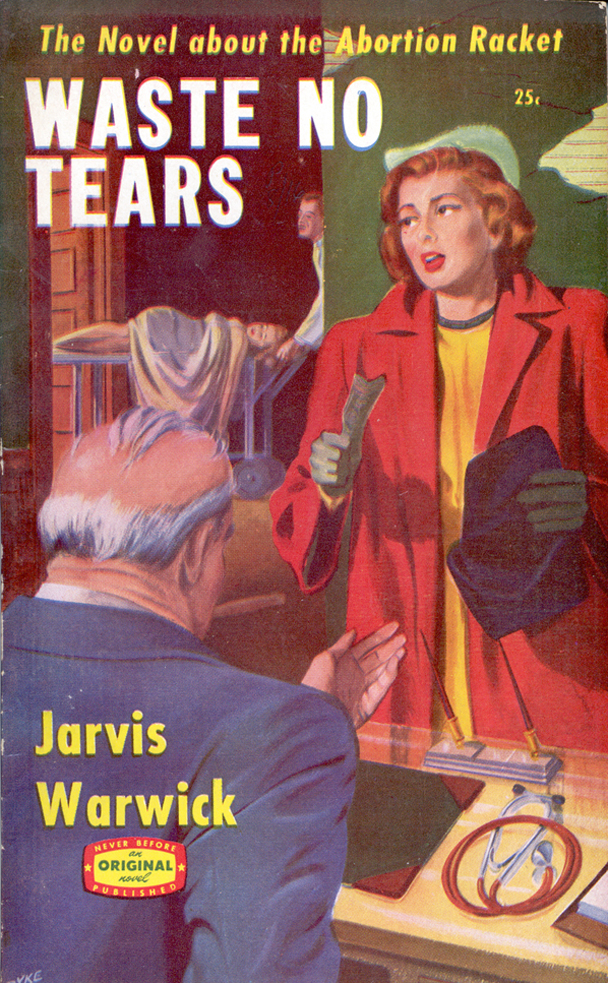
Brian Busby, editor of Montreal-based Ricochet Books, a Véhicule Press series that recovers and reprints vintage Canadian noir from the ’40s and ’50s with titles like Blondes Are My Trouble and The Crime on Cotes Des Neiges, makes a similar point. Noir often exposes “an underside that is typically absent in Canadian literature. I won’t say that reading noir is akin to slumming, but it rights an imbalance.” According to Busby, postwar Anglo Canadian writing, set in Montreal and elsewhere, tended to set its plots amongst the city’s wealthy. Only the noir novels of the time effectively captured the dingy truth of Montreal’s brothels, clubs, and seedy nightlife.
“William Weintraub documented these years in City Unique: Montreal Days and Nights of the 1940s and 1950s, but in fiction, it exists only in the noir paperbacks of Brian Moore, David Montrose, Douglas Sanderson, and a handful of others,” Busby says. 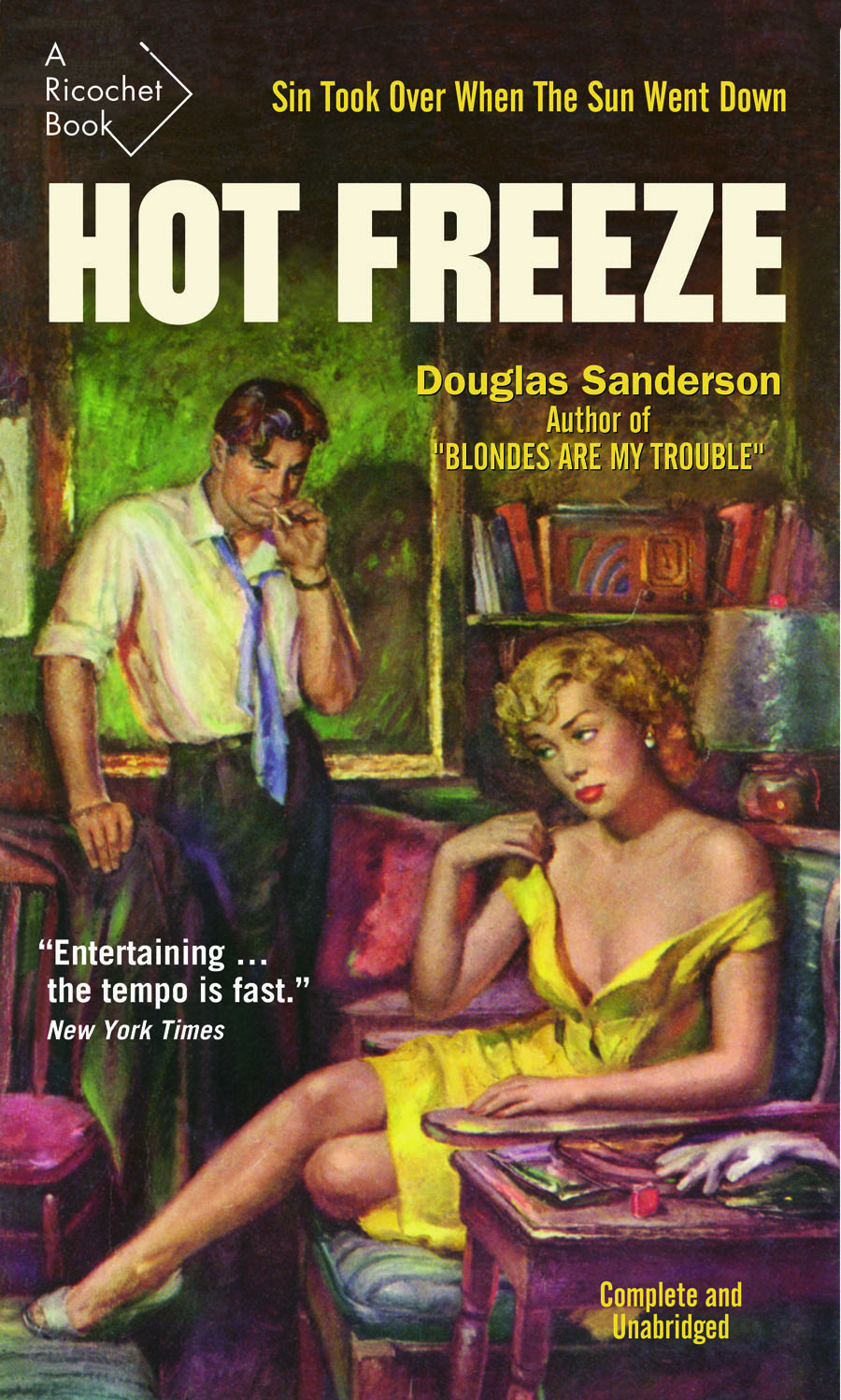
Indeed, the noir renaissance is acute in Vancouver, but criminality, class war and exploitation are everywhere, and the genre is re-emergent elsewhere. In addition to Akashic’s Vancouver noir, upcoming small press books billed as noir include Michigan-based Vern Smith’s The Green Ghetto (Run Amok Books), A. G. Pasquella’s Toronto set noir thriller, Yard Dog (Dundurn Press) and Lisa de Nikolits’ Rotten Peaches (Inanna Publications). Additionally, the recent past has no shortage of noir small press anthologies, including several from Toronto press Exile Editions such as 2015’s The Exile Book of New Canadian Noir.
“Noir feeds off corruption, greed, and sun — dry fuckery that drives the absurd,” explains Michigan-based Vern Smith. “And where are we, as a culture? Well, here in the US, we have a former game show host as president. He wants to arm teachers with guns. Dennis Rodman is fast becoming the go-to consultant on international relations. Shootings are an everyday thing. Not 20 minutes from where I live, 40 or so people are getting shot a week, only you’re not supposed to talk about it. If all that wasn’t bad enough, the Nazis are back.”
In noir, the cause of ruin is not the crime nor the character; it is society itself. Thus, the world depicted by noir finds new ways to mirror our 21st-century reality. Characters are hopeless, the settings are gloomy and the themes, dismal. And so, it’s no surprise that writers — and readers — are turning to the new noir. As Smith puts it, it’s hard to remember a time “when we’ve been so desperately divided, or a time that we acted so viscerally and literally truculent; and that makes for a noir world.”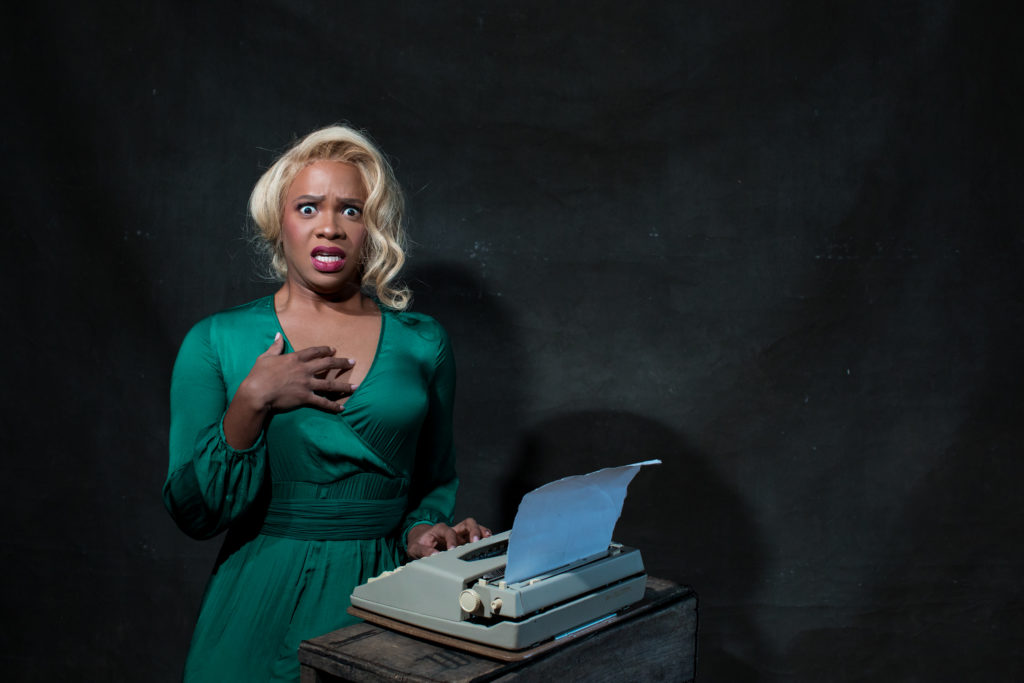
But noir is not without its critics. Traditionally, the genre was male-dominated and misogynistic, with women serving as little more than objects or side characters. Does the new noir represent a return to old clichés? Are these primarily texts in which failed white men flex their muscles in mirrors reflecting back their sallow faces, empty bottles, and defeated womenfolk?
“In older noir stories, women characters usually fall into three categories: the Femme Fatale, the Damsel in Distress and the Dead Body. I have definitely noticed an attempt in contemporary noir to address these inequalities and make female characters, even if they’re not the protagonists, more well-rounded and more essential to the plot,” says first-time noir author, Toronto’s A.G. Pasquella. In 2016, for- mer Broken Pencil fiction editor Pasquella and Terri Favro edited PAC’N HEAT: A Noir Homage to Ms. Pac-Man. The book consisted of submissions from writers that approached Ms. Pac-Man as a noir protagonist.
Noir author and enthusiast Lisa de Nikolits also discusses potential mutations of the genre. Last year, she ran Sixteen Shades of Noir, a series that attempted to highlight noir’s bleed into other genres. The columns included noir sub-genres ranging from revenge noir, Catholic noir, graphic noir, and even comedic noir.
“I was trying to demonstrate that aspects of noir are being used in brilliant ways in all kinds of fiction in order to add more to the stories, to layer the characters not only in darkness or satire or comedy, but in noir, that almost-elusive, most elegant time bomb of destruction,” de Nikolits says.
The rise of modern noir has also meant the arrival of what might soon qualify as newly important subgenres, if they don’t already — Indigenous noir, Black noir, queer noir are all appearing both in the small press and indie arts communities.
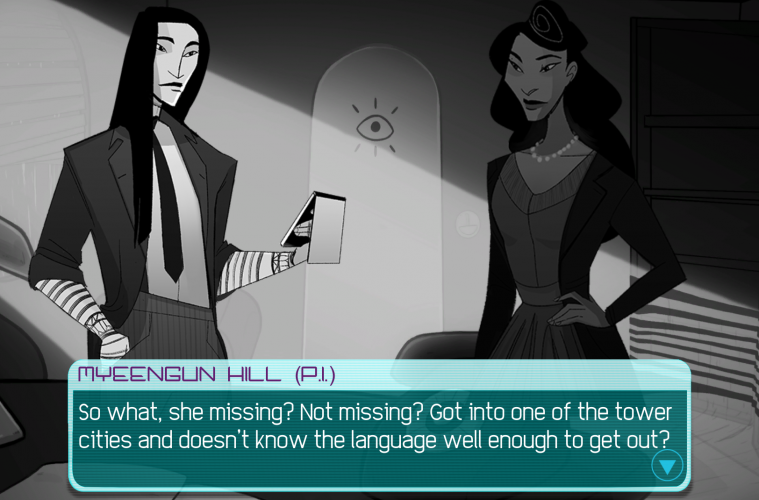
In 2017, a team of Indigenous female developers based out of Hamilton, Ontario, created a noir video game. The company, Achimostawinan Games, produced Purity & Decay, a detective game that not only confronts the male-dominated game industry, but also the testosterone-burdened world of noir. Billed as a “visual cyber-noir novel” the game asks, “Who killed Merriam LaPensee?” Even as that question drives the plot forward, Purity & Decay also contemplates another, deeper, inquiry: What does an Indigenous future look like seven generations from now?
Noir graphic novels and comics have also been subverting the traditionally white genre. Incognegro, written by Mat Johnson and illustrated by Warren Pleece, was originally published in 2008 and republished last year by Dark Horse Comics. It tells the story of Zane Pinchback, an African-American writer in the 1920s. Pinchback passes for white and reports on lynchings in the Deep South. Another book, set in the time of the Harlem Renaissance, is in the works.
Likewise, 2016 gave us Black Mumba, an anthology short stories set in Mumbai self-published by graphic novelist Ram Venkatesan. It’s crime noir but, as the online promo text explains, “there are no real criminals in Black Mumba. The city itself is the quarry and the bleak, weird and yet magical nature of life on its streets is at the heart of the stories.”
Perhaps that’s the key to noir’s resurgent appeal, especially in the small press and indie arts world. There are no criminals per se, no heroes and, ultimately, no winners. It’s a genre released from the expectations of success and striving, a genre devoid of morality, a nihilist comment on how power and politics fail us. In a sense, noir is a genre that tricks readers into exploring sensitive topics like poverty, addiction, corruption, and gentrification that they may otherwise shy away from.
Says SG Wong, “The exploration happens, as with any meaningful literature, when the reader is drawn into the characters’ conundrums and moral ambiguities. Real life is far from straightforward. When noir best explores these topics, I think it’s using the grit and darkness of its tropes to build a mirror that transforms into a magnifying glass.” Or, as Sam Wiebe puts it, “Bad shit happening to people much like ourselves. It’s about the dark things we instinctively know, but choose to ignore — until they catch up with us.”
What comes next for the noir indie culture resurgence is up to this generation of writers and the presses that work with them. Lisa de Nikolits sees the ongoing return of classic noir spilling into every possible genre. Vancouver’s Belshaw is more pessimistic. He’s concerned that we might soon reach peak noir, and come to see noir as an empty marketing term.
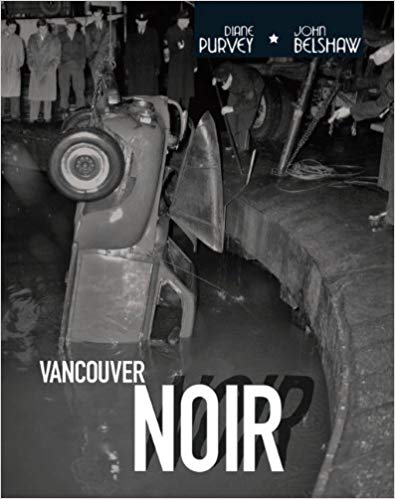 “About eight years ago, Diane Purvey and I coined the phrase ‘noir Vancouver’. Now I hear people using that term as though it’s a pair of well-worn shoes. I’d be happier about that if noir-scale slipperiness wasn’t back in style,” Belshaw says.
“About eight years ago, Diane Purvey and I coined the phrase ‘noir Vancouver’. Now I hear people using that term as though it’s a pair of well-worn shoes. I’d be happier about that if noir-scale slipperiness wasn’t back in style,” Belshaw says.
Whatever shape noir takes in the future, it seems that a genre bathing in pathos, deception, gloom, and hopelessness is quickly becoming a favourite in a supposedly peaceful country of bucolic countryside and well organized, low crime cities. This kind of stark incongruity makes it clear that society is looking for some sort of response to a looming disarray many sense but cannot quite articulate. The new noir gives us a momentarily safe way to consider the late capitalist chaos — coming for some, already arrived for others.

